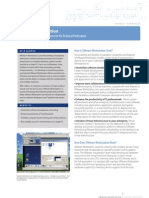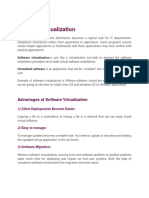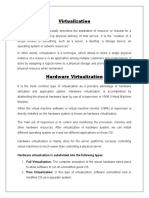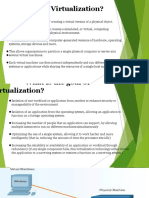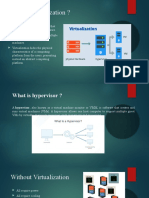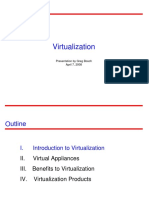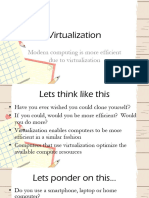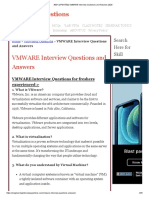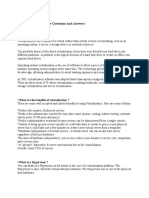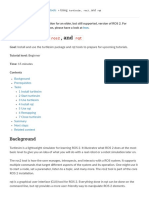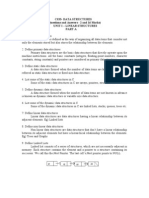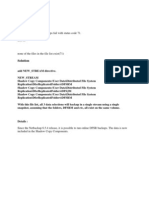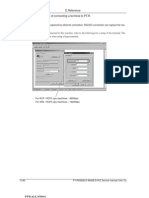VMwarePro
This blog is mostly contain articles about
virtualization stuffs(VMware)
VMwarepro Home
Learn VMware
About Me
Contact Me
Tuesday, 13 January 2015
Virtualizations, Basics:
Tuesday, January 13, 2015 No comments
Hey folks !
Today, i am gonna discuss about Virtualization, The concept of virtualization is itself beyond
the imagination. As of we all are known about software and hardware, those are the big guys
up to now. And both are inter dependable on one another. One not works without the other.
For example, if you take an operating system, it runs on hardware. Without the hardware, the
OS and Applications installed on it will not work. In the same way, if the software (drivers) is
�not installed the hardware also not work. And as these are inter dependable, there are so
many limitations to achieve our needs. So lets see how a common computer architecture
looks like.
Normal Computer Hardware Architecture (Overview)
The first layer is hardware layer which is a bare metal, the second layer is
Operating system and the third layer is Application Layer. In other words,
Operating system will be installed on Hardware and it takes the advantage
of the kernel to communicate with hardware. Applications will be installed
on the Operating system. like yahoo messenger, vmware workstation, photo
shop etc.
Limitations
So as the OS and Applications are dependent on Hardware, if anything goes
wrong with the hardware both will get crashed. And with this type of
architecture we cannot run multiple operating systems at a time, we can install multiple
OSes but we cannot run them at a time, if we want Linux, we need to logoff from Windows
and vice versa. And one more thing is, as per the case studies done by so many professionals,
at a point of peek time also, an operating system does not utilize more than 50% of the total
physical resources (applicable to servers), so with this we are wasting our money for servers.
That being said, to overcome these limitation we need is a better solution. Here i want to
introduce the hero of Virtualization, that is none other than VMWARE.
May be some of you are already aware and using
VMware Workstation Application. If you ask a
question like What is the use of VMware
Workstation then? . Even though it may fulfill
some
requirements
overcome
some
of
virtualization
limitations
of
and
normal
architecture and it is also providing access to
virtual machines w but before that remember its
an application which resided on Operating system, that means it provides virtual machines
side by side but access to all the resources allocated for those virtual machines are given by
the Operating system only.
What is a Hypervisor?
There are two types of virtualization software's available from vmware. One works at
application level (ex. vmware workstation & vmware server) and the other one works at
Operating system level (ex.VMWare ESX server, Microsoft Hype-V, Citrix XenServer etc. These
are called Hypervisors. The Hypervisor is an operating system/virtualization which directly
communicate with the hardware and provides better access of resources to the virtual
�machines. Where as i said before, virtualization apps like vmware workstation, microsoft
virtual server, vmware server will provide access of resources to virtual machines through
Operating system, as those are dependent on OS and are residing at application level. So,
with the help hypervisor we can take the advantage of extra-ordinary resource allocation and
management. With the Hypervisor, the architecture looks like below
In detail..
1. Hardware CPU, Memory, NIC and Disk
2. Virtualization Layer VMware ESX Server Kernel
3. Service Console VMware ESX Server Operating system (RedHat Based)
4. Virtual Hardware Set of files, which resembles hardware in the Guest OS
5. Operating System OS which is installed on a Virtual Machine
6. Virtual Machine The combination of Virtual Hardware and Operating system (point 4+ 5).
Advantages of Virtualization
1. Utilizing server resources at fullest (by installing virtual machines side by side)
If a physical server has 100% resources for example, in the normal architecture at the peek
time also the operating system is able to utilize its resources between 25%-50%. In that case,
we are wasting the other 50%-75% resources. But with the use of virtualization using a
Hypervisor we are creating more than virtual machines. They all are running side by side,
they have their own allocated resources. So if you assume like, we have created 2 virtual
machines(one windows & one linux) with 50-50 resources allocated for them, and in this case,
we are utilizing 100% resources of the server.
2. Access to multiple operating systems simultaneously
3. We are using one physical server, to host one or more virtual machines (depending on the
physical server resources). With this we are saving power, data center space and
administrative personnel.
4. With the advantage of the features provided by vmware (vmotion, ha, drs, dpm) , we can
get uptime of a operating system / application up to 99% .
5. As the virtual machine is made with a set of files, we can move it / copy it / back up it/
restore it very easily. So the administration of machine when compared to physical is very
very less.
Email ThisBlogThis!Share to TwitterShare to Facebook
�Newer Post Older Post Home
0 comments:
Post a Comment
Subscribe to: Post Comments (Atom)
Search
Labels
top
� VMware Interview Ques/Ans
Blog Archive
2015 (2)
January (2)
100 TOP VMware Interview Questions & Answers V 3.5...
Virtualizations, Basics:
2014 (14)
December (9)
April (5)
2013 (41)
November (2)
October (1)
July (22)
June (16)
Followers
Popular Posts
VMware Converter P2V / Cold Clone Process
The cold clone process when using the VMware Convert Cold Boot CD is pretty straight
forward but in case anyone out ther...
VMware Interview Questions Answers Part 1
Basic VMware Interview Questions and Answers - 1. VMWare Kernel is a Proprietary Kenral
and is not based on any of the UNIX operating...
100 TOP VMware Interview Questions & Answers V 3.5, 4.0
�1 . VMWare Kernel is a Proprietary Kenral and is not based on any of the UNIX operating
systems, its a kernel developed by VMWare Company....
About Me
asim patel
View my complete profile
Categories
top
VMware Interview Ques/Ans
Follow by Email
Pages - Menu
Home
VMware Interview Questions Answers
windows
Blogger templates
Blogger news
Blogroll
�Contact Form
Name
Email *
Message *
Text Widget
Powered by Blogger.
Copyright VMwarePro | Powered by Blogger
Design by FlexiThemes | Blogger Template by NewBloggerThemes.com







